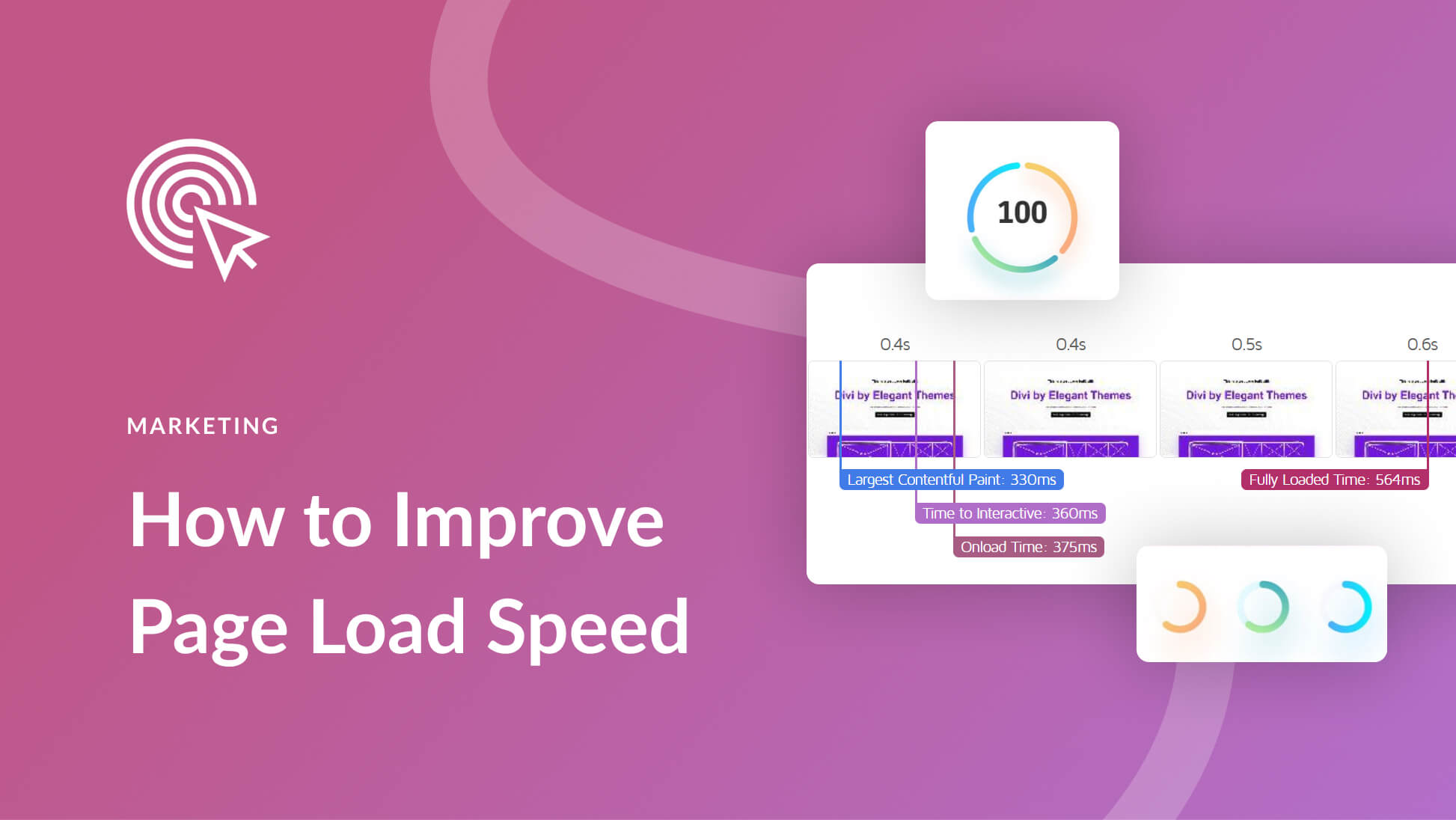The angel on your right shoulder says that quality content is about being creative and compelling, writing copy you can stand behind and that the world’s finest authors would be proud of. The devil on your left shoulder scoffs at that – quality is all about the numbers and beating the competition, nothing more.
Both are actually correct. The truth lies somewhere in the middle, in an angel-devil hybrid.
There are two ways to track quality. The first is by how well-written the content is. The lack of misspellings, the inclusion of interesting graphics, depth and thoroughness in the topic, etc. This is the subjective take on quality.
The second is how well the content performs. How high quality can content truly be if people aren’t finding it, spending time with it and sharing it? This is the objective take on quality since everything is trackable with metrics.
These two assessments of quality content are not mutually exclusive. Without well-written content, stats suffer. Without stats, producing well-received content is a guessing game.
Quality According to Google
Google is the almighty decider of content – what gets found, what stays lost and even how brands, marketers and writers go about crafting and measuring quality work. Google’s best practices veer toward the subjective:
- Discover what makes this piece of content different and read-worthy.
- Your content should be for the reader, not for the search engine. If you weren’t at all worried about Google, would you still be adding that link or using that keyword phrase there? If the answer’s “no,” leave it out.
- Your content has to deliver what it promised – don’t be deceitful or use clickbait just to get more eyes on it.
Definitely don’t ever publish content with any of the following:
- Broken links
- Deceptive promises
- Excessive ads
- Spelling or grammar mistakes
- Obvious information (ex. Texas is a state)
- Wrong information
- Made up information
You also shouldn’t publish your first draft or use media just for the sake of taking up room and distracting the reader from the content.
Does Google Have it Wrong?
Marketers and data analysts see red when things like “write in a conversational tone” and “edit for grammar” pop up in these sort of articles. To them, quality content is about how many clicks an article gets, how many times a post is shared, etc.
We agree that those things are absolutely important. They don’t exist in a bubble, though.
Google’s product is its search results, but its customer is the searcher, the person sitting behind their computer typing something into the search box. In order to keep its audience happy, Google knows it can’t throw shoddy content in its face. How does Google know that? Because it used to do it – a lot.
Back when I started writing over a decade ago, keyword stuffing and short content were all the rage. Writers were paid peanuts because nobody, Google included, cared about quality – they cared about churning out content and getting clicks, even if those clicks lead to a page that in no way delivered what the headline promised.
It wasn’t long before keywords became untrustworthy. They didn’t truly tell Google or its audience what a page was about. They also inadvertently weeded out the best pages if the searcher didn’t use the right keywords.
In response, Google changed and continues to change its algorithm, constantly making it more intuitive.
Great Writing and Great Performance Can’t Be Unlinked
According to this WordStream article, none of these components define quality content:
- Authority and expertise
- Formatting
- Length
- Readability
- Spelling and grammar
- Trustworthiness
- Visual appeal
The article also said this, referring to top performing content: “Unicorn content can be long or short, have zero images or 10, and have a couple spelling errors or totally perfect grammarization.”
I don’t totally agree with this statement – and neither do the numbers. Posts with images get 650% more engagement than posts without. You have 15 seconds to catch the reader’s interest – if you’ve misspelled a word or used grammar that’s so poor I can’t make out what you’re trying to say, you’ve lost me.
So, yes, Google may still rank your content highly if you have a few typos or you left out images, but my guess is that you want to keep both Google and your audience happy, so you need to approach your content from all angles. Moreover, if one of those unicorn posts is doing well now, how much better could it perform once you tick all the boxes?
How to Write Quality Content
We’ve already covered a number of strategies for increasing quality in this article, so I’m going to just briefly go over two must-talk-about topics: quantity and keywords.
Quality vs. Quantity
Something that quality is not is quantity. A quality article is not necessarily 4,000 words – instead of thorough, it could be boring and repetitive. Short articles can be phenomenal – I just read one by Guillermo del Toro in Time that took under a minute to finish and was one of the best things I’ve ever read. Length is not a determiner of quality. The length of your article should be determined by the content. How much space do you need to say what’s necessary and to give the reader enough information so they don’t have to look elsewhere?
Keywords
Google has sort of a love-hate relationship with keywords. It doesn’t want you to actively use keywords in a way that’s obvious and unnatural, but keywords are one of the ways that your web pages are ranked and discovered.
Here’s a writing secret: if you’re staying on topic, SEO gets in there naturally. Or, at worst, you can go back through an article and tweak it to include SEO in a natural way.
For example, let’s take that last sentence I just wrote. If I wanted to optimize for “include SEO naturally,” I would rewrite it as, “Or, at worst, you can go back through an article and tweak it to include SEO naturally.” That’s not much different from editing and making adjustments for better wording.
If you’re wondering which keywords to include in your content, turn to your audience. What questions are they asking in forums? What are they saying in the comments on your blog? This is the language you should use in your own content.
How to Measure Your Content
What you measure will change as your brand or website grows. These are some of the commonly used metrics for tracking performance.
Keyword Rankings
This is a web page’s current position in search results for a specific keyword or term. You can also compare how your pages are ranking for those keywords in relation to your competitor’s pages.
Unique Visitors
This tells you how many visitors your content is attracting and it’s a good indication of your engaged audience size.
Page Views and Average Time on Page
The more page views your content has, the higher its performing. Average Time on Page tells you how long a person is staying on your page. If you’ve written a long-form article but you can’t keep viewers for more than two minutes, something’s wrong.
Pages Per Session
The average number of pages the viewer goes to during one session on your website. This can help you determine if your inter-linking strategy is working or not.
The more engaging a post is, the more comments your readers will leave. The idea is to start a conversation – if there aren’t any comments, you haven’t sparked emotion.
The same thing is true for social media content – your posts should have comments and shares, which are an indication that people are intrigued by what you’re saying.
Backlinks and Top Referrers
Keeping track of your backlinks will tell you how viral your content is. It also gives you the opportunity to reach out to those sharing your content to build a relationship.
By knowing who your top referrers are, you can determine which websites to continue partnering with or where your advertising money is well-spent. You can also decide which social media platforms to continue posting on and which ones aren’t driving traffic.
Try This
Once you have a good amount of content that you’ve been tracking, segment it by performance, separating the top 10% of content from the remaining 90 percent. Dig deep into that top 10% to see what you did there. Compare it to your lowest performing content to see what you didn’t do. Use the insights to create future content ideas, templates and strategies.
Final Thoughts
Fake news is incredibly popular. It’s clicked on, shared and talked about all the time. That makes it a great candidate for quality content according to those who only care about the numbers. That type of content can be poorly written, though, and detrimental to your business and, frankly, not how most quality brands want to be seen.
Producing quality content is a balancing act. You need the content to be well-written so that your readers are engaged and happy. You also need it to be optimized in a savvy way so that Google favors it in search results. Since Google has made it clear that tricks don’t work, it’s best to create (or hire someone to write) great content that covers all the bases, creatively and technically.
Want to put all of this to the test? We put together 20 content ideas that will drive massive traffic to your site.









Hey Lindsay,
Great article. Quality and relevancy matter a lot in crafting well-strategized web content. I especially like the segment specifying the content measuring parameters, it is something that pays worth for your time spent.
Thanks Beth! I think people forget the relevancy part a lot – you can get so focused on quality writing (grammar, spelling, etc.) that you forget about quality for your readers.
Very insightful!
Great article, we’re always telling our clients how important their content is and why they should get a professional to help them – engineers do not content writers make!
Yes! I agree. Specialists are specialists for a reason.
The big problem I keep seeing is articles are written with the main purpose to rank well with Google and they are excruciating to read…
“How to safely clean your monitor can be done a few ways. What do we mean when go to safely clean a monitor? Well, first, to safely clean a monitor you should start with products that are safe for monitor use. Step 1: Safely Clean Your Monitor…”
You get the idea. Google needs to de-rank crap like this.
Yes! When I started freelancing 10 years ago, clients WANTED that. Can you believe it?
Agreed! I’d also say an awful lot of this wordiness is based on the quantity point raised in the post. I wonder could the author give an example of short content that ranks well, rather than was enjoyable?
Interestingly, the author notes she found the piece by Guillermo del Toro whilst browsing Time, rather than through search, the top result is a 7000 word strong Wiki page…
Hey Dave – Off the top of my head, I don’t have a specific example for shorter content that ranks well, but it would likely be on a basic topic. An intro to something. A “why” instead of a “how.” Something that can be fully answered in fewer words, so there would be less competition with longer posts. Does that make sense?
And here’s the Guillermo del Toro piece I mentioned:
http://time.com/5520554/guillermo-del-toro-radical-optimism
readability is of primary importance among other factors
Readability matters a lot.. But what about for Amazon niche sites?
In that case I will strongly recommend go with US writers.. They writer quality reviews…
Worth read..
Thanks
Readability is very matter for me.